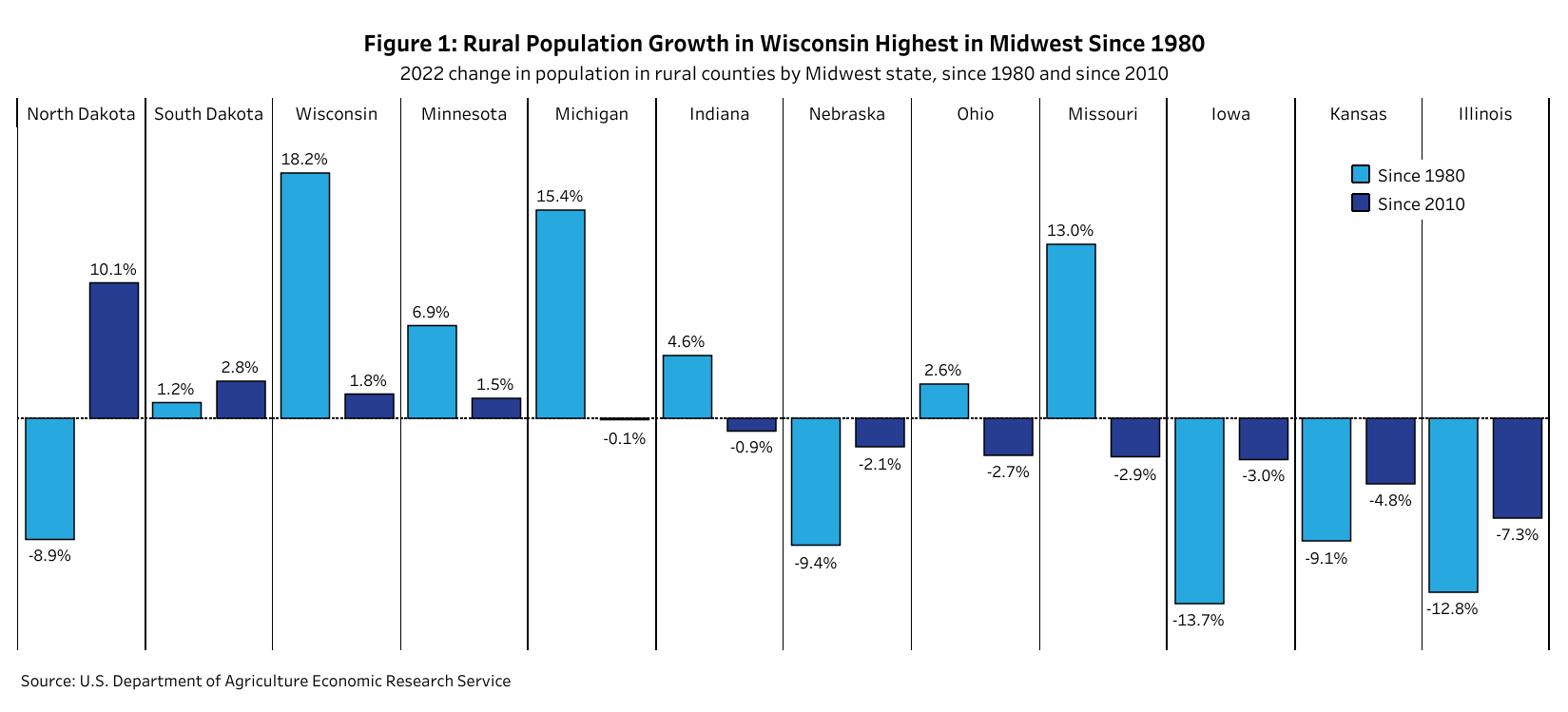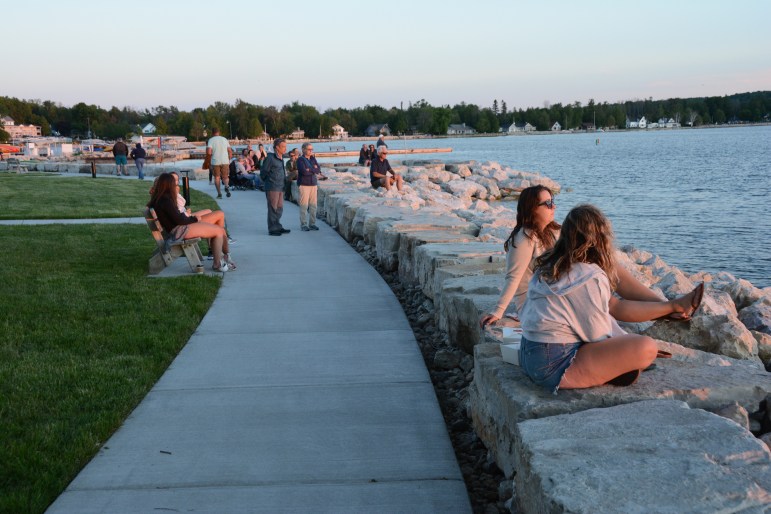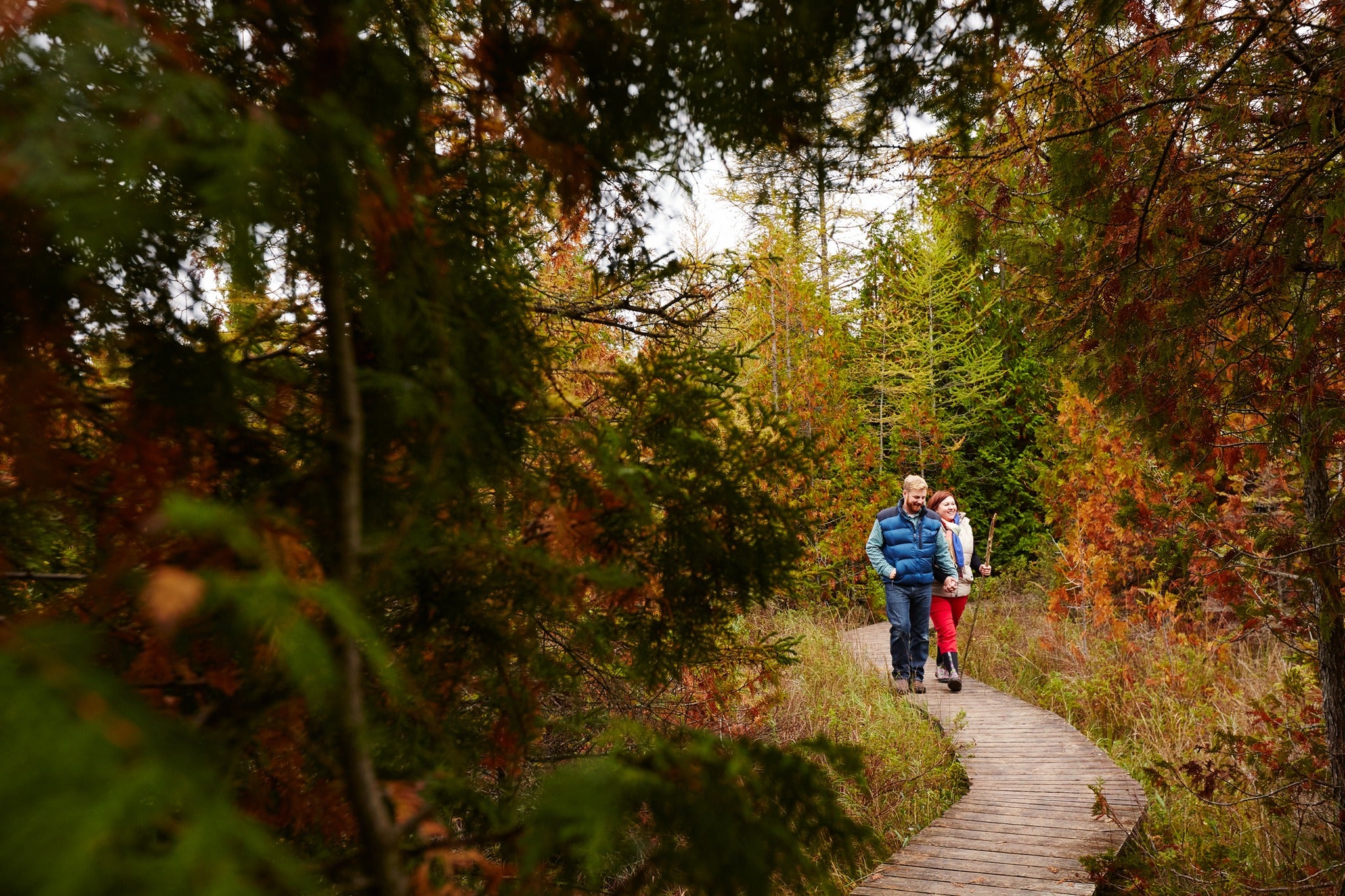Wisconsin has led the Midwest in rural migration since 1980, bolstered in recent years by people moving to areas known for tourism as they near or enter retirement age.
That’s according to a new report from the Wisconsin Policy Forum, which found the pace of that growth has slowed in recent decades. The state’s rural population grew by 18.2 percent from 1980 to 2022. But since 2010, it’s only increased by 1.8 percent.
Mark Sommerhauser, communications director for the Wisconsin Policy Forum, authored the report. He said rural population growth in Wisconsin peaked in the 1990s before steadily slowing in the 2000s and 2010s.
News with a little more humanity
WPR’s “Wisconsin Today” newsletter keeps you connected to the state you love without feeling overwhelmed. No paywall. No agenda. No corporate filter.
“Rural Wisconsin is definitely not growing as rapidly as it did, certainly, in the 1990s,” Sommerhauser said. “There are parts of rural Wisconsin that are declining, but, overall, rural Wisconsin is doing better than most of its neighbors and most of its peer states here in the Midwestern U.S.”

But the rural counties that have seen the most growth since 2010 are those dominated by tourism and summer recreation, according to the report.
Some of those include Sawyer, Vilas, Bayfield, Burnett and Door counties, which each saw population growth near or above 10 percent from 2010 to 2022. They also all rank in the top-10 counties for leisure and hospitality employment in the state.

From 2020 to 2022, Florence, Vilas, Adams, Burnett and Sawyer were the five Wisconsin counties with the highest net migration rates. All are considered “recreation counties” by the U.S. Department of Agriculture.
“It is clear that people at or near retirement age are a significant component of the migration to some of these rural counties, especially in the north,” said Sommerhauser.
For example, Vilas, Burnett, Sawyer, Adams and Door counties had the highest net migration rates among 55- to 74-year-olds during the 2010s, according to the University of Wisconsin-Madison Applied Population Lab.
“You have people who own summer cottages and second homes, and as some of these folks get near or reach retirement age, there is some share of them who are moving up there,” Sommerhauser said. “I don’t think that’s the whole picture.”
Applied Population Lab data shows Door, Adams, Sawyer, Burnett and Vilas counties also were successful at attracting 30- to 54-year-olds, but to a lesser degree than those around retirement age.
Sommerhauser said being tourism-driven appears to act as a buffer against population loss for Wisconsin’s rural counties. That’s especially true when compared to the state’s neighbor to the south.
“If you look at rural Illinois, a very agrarian, agriculture-focused place, it is not a coincidence as to why rural Illinois has been seeing pretty significant depopulation over the last few decades,” he said. “We are fortunate here in rural Wisconsin that we have, frankly, a little more scenery. We have some natural resources that are really appealing to people and draw people to some of our rural places.”

But some of the fastest-growing rural counties may face challenges in the coming years, as Sawyer, Vilas, Bayfield, Burnett and Door counties are all projected to have 41 percent or more of their populations composed of people 60 or older by 2040.
“As some of these communities age, and as more people at or near retirement age are moving into them, it is going to start to stress the demand for certain services up there that may already not be easy to come by,” Sommerhauser said. “I’m thinking first and foremost about health care services — that’s something that’s going to be in even greater demand in some of these places in the coming years and decades.”
Still, Sommerhauser said attracting retirees is often an economic boon for many rural communities.
“These people are bringing money, and they’re bringing resources with them that they can spend in the local economies,” he said. “That’s really a good thing.”
Wisconsin Public Radio, © Copyright 2026, Board of Regents of the University of Wisconsin System and Wisconsin Educational Communications Board.




